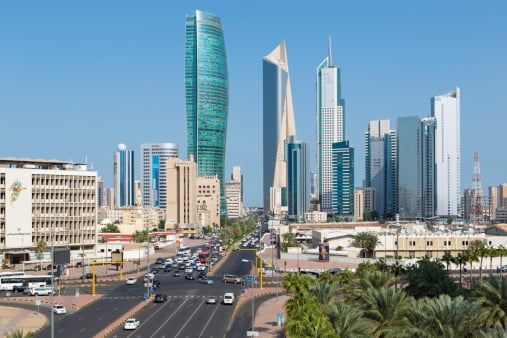Saudi, UAE, Bahrain raise interest rates, Kuwait unchanged
The Kuwaiti decision set the country apart from other wealthy Gulf Arab oil exporters

Kuwait’s central bank kept its key interest rate unchanged on Wednesday, citing the need to boost economic growth, despite a 0.25 percentage point rate hike by the US Federal Reserve, which usually influences Kuwaiti policy.
The Kuwaiti decision set the country apart from other wealthy Gulf Arab oil exporters in the region. Saudi Arabia, the United Arab Emirates and Bahrain raised their rates within minutes of the Fed’s announcement. Qatar was expected to follow suit, and Oman has been raising its rates gradually.
Bahrain’s central bank said on Wednesday it was raising its key interest rate by 25 basis points after the US Federal Reserve tightened policy.
The central bank’s key policy interest rate on the one-week deposit facility was raised to 1.75 percent from 1.50 percent.
A similar decision by the UAE saw the repo rate for borrowing short-term liquidity from the central bank against certificates of deposit uncreased by 25 bps to 1.75 per cent.
Saudi Arabia’s central bank said it was raising its reverse repo rate by 25 basis points to 1.50 per cent.
The bank also said it was keeping its repo rate, used to lend money to banks, unchanged at 2.00 per cent.
Kuwait, which manages its dinar currency against a US dollar-dominated basket of currencies, imitated the Fed immediately after three US rate hikes that started in December 2015.
But in June this year it kept its discount rate flat even though the Fed tightened policy again, and after the latest US hike was announced on Wednesday, Kuwait again decided to leave its rate unchanged.
“The central bank left the discount rate unchanged at 2.75 per cent to consolidate an atmosphere conducive to the recovery of economic growth rates,” the central bank said in a statement.
Kuwait’s economy is expected to shrink 2.1 per cent this year, according to the International Monetary Fund. Although that is largely because of a cut in oil output under a global agreement among producers to restrain production, it also reflects a sluggish private sector.
Commercial bankers believe improving liquidity in Kuwait’s banking system caused by higher oil prices has also persuaded the central bank to be less aggressive about raising interest rates.
Kuwait’s trade surplus expanded 3.5 per cent from a year earlier to KD1.43bn ($4.75bn) in the third quarter of this year, pushing more petrodollars into the system.
That helped the spread of the three-month Kuwait interbank offered rate over the US dollar London interbank offered rate shrink to just 18 basis points from 69 bps at the start of this year.
Kuwait’s central bank governor, Mohammad al-Hashel, said in October that he looked at two key factors when making interest rate decisions: Kuwaiti banks’ interest rate margins and dinar deposit rate spreads with the US dollar deposits.
On Wednesday, the central bank said its policy decision was based partly on the ability of local banks to absorb any effort to raise interest rates on their dinar deposits.
With contributions from Reuters
